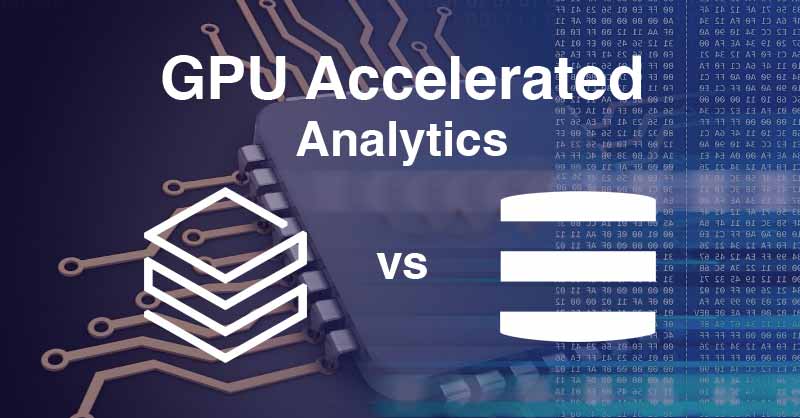GPUs have continued to rise in interest for organizations due to their unparalleled parallel processing power. Leveraging GPUs in an enterprise analytics initiative allows these organizations to gain a competitive advantage by processing complex data faster and extracting valuable insights against a larger corpus of data that can result in break-through insights. Both Databricks and Kinetica are platforms that leverage NVIDIA GPU (Graphics Processing Unit) capabilities for advanced analytics and processing of large datasets. However, their specific approaches and focus areas differ with respect to leveraging the GPU.
Primary Purpose:
Databricks is primarily known for its unified analytics platform that integrates Apache Spark for big data processing and machine learning tasks. While Databricks does support a plug-in for GPU-accelerated processing for certain machine and deep learning workloads, its design center is focused on CPU based data engineering and data science on large-scale data processing tasks. Databricks supports SQL through Spark SQL, and has streaming capabilities, but neither of which is optimized for the GPU. Typically, the GPU use case for Databricks involves the creation of a model in batch. Think, building a model to predict customer churn or build a new large language model (LLM).
Kinetica is specifically designed as a high-performance GPU-accelerated database platform. Its primary focus is on delivering real-time data analytics and insights through the power of NVIDIA GPUs. Kinetica’s main use cases often involve interactive contextual analytics on streams of sensor and machine data utilizing time-series, geospatial, and graph analysis, especially for applications where low-latency access to data is crucial. Every part of Kinetica is natively optimized for the GPU, including ANSI SQL, stream processing, and hundreds of analytic primitives for graph, spatial, time-series, and vector search that leverage the power of the GPU. Think, detecting threats in our airspace, spotting buying or selling stock trading opportunities in real-time, optimizing a 5g network, energy management and exploration, or re-routing a fleet of vehicles to achieve on-time delivery.
Core Technology and Architecture:
Databricks heavily relies on Apache Spark, an open-source distributed computing framework, which allows users to process and analyze large-scale datasets in parallel. While Databricks does provide some support for running Spark workloads on GPUs, it is not fully optimized for GPU-centric processing as Kinetica. As with any plug-in approach, Databricks’ GPU integration can have performance overhead, compatibility issues, security risks, lack full functionality, require extra integration effort, and receive more limited support and maintenance.
Kinetica is built from the ground up to fully harness the power of GPUs. Kinetica’s seamless integration with NVIDIA GPUs incorporates CUDA. Its database architecture is specifically designed to take advantage of GPU parallelism, allowing it to perform complex data operations significantly faster than traditional CPU-based databases. See independently verified benchmarks.
Community:
Databricks has a significant user base and a robust ecosystem due to its integration with Apache Spark and support for various programming languages like Python, Scala, and SQL. It benefits from a broader community and extensive library support for machine learning models.
While Kinetica may not have as large of a user community as Databricks, it has built a strong presence in certain industries and domains that require high-performance real-time analytics on constantly changing data, such as finance, telecommunications, Department of Defense, and IoT (Internet of Things) applications such as Citibank, TD Bank, T-Mobile, Verizon, NORAD, FAA, Lockheed Martin, and Ford.
In sum, Databricks and Kinetica both leverage the GPU for advanced analytics but in different ways that address different use cases.
Check out Kinetica on NVIDIA GPUs on AWS, Azure, or Kinetica Cloud.

